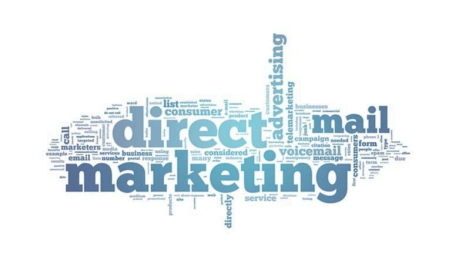Direct mail and email are useful tools for reaching a large number of possible customers at a low cost. Email is fast and affordable, while direct mail, when designed well, can make a strong impression.
Whether you choose direct mail or email, it’s important to make sure you are sending the right message to the right people, and that your campaign follows the rules set by the General Data Protection Regulation (GDPR). By tracking the results, you can see how effective your campaign is and improve future mailings.
1. Is it right for your business?
- Know who you want to reach
- Start by looking at your current customers.
- Build your own mailing list to get better results.
- When trying to reach new customers, look for people who are similar to your best customers. This will give you a better chance of getting a response.
Set your goals for current customers
- Think about what you want to do with your existing customers. For example: ● Introduce new products
- Boost sales with special offers
- Keep them updated and build loyalty
Set your goals for new customers
For example:
- Create interest in what you offer
- Collect contact details for follow-up
- Make direct sales
Understand the main costs involved
- Building your own list or renting one from another source
- Writing and designing your message, including printed inserts or online content ● Printing and postage costs for physical mail
- Staff time spent planning, sending, and following up
- Hiring outside services like a mailing house
Estimate your expected results
- Response rates can vary a lot. Testing each campaign will help improve your future results.
- A direct mail campaign to new contacts often sees around a 4% response rate. Email results vary by industry.
- You should get better results from existing customers. If you send a personalised offer to your best customers, the response and sales rates should be higher. Make sure you are ready to handle the orders you receive.
Decide if a mailing campaign is the right choice
- Weigh the costs against what you hope to gain, such as extra sales or good leads. ● A campaign is only worth it if you get a strong response, a good return per response, or both.
● Also think about other ways to meet your goals, like advertising, PR, or trade shows. 2. Building your own mailing list
Your list is key to getting good results
- It usually works better to build your own list than to buy one.
- Your current customers are a great source of leads. You can even offer them something in return for referring friends.
- Keep contact details from people who show interest or visit your booth at events. ● Ask your suppliers or partners if they know anyone who might be interested in your business.
- Train your staff to collect full details from customers, like email, address, and phone number. If you’re dealing with businesses, include job titles or roles. Always make sure you have their permission to add them to your database.
Hold onto every name
- Save leads from customer lists, trade show visitors, ads, and warranty cards. ● Always follow the GDPR rules and other laws.
Use software if you send a lot of mail
- Decide what information you need and how to organise it before choosing software. ● You can use basic tools like spreadsheets for small campaigns.
- Keep records of when you last updated a contact and when they were last mailed. ● Track how often you contacted them in the past year and whether they responded. ● Mailing too often can turn people away, but regular updates help improve results.
Treat your database like a valuable tool
- Check data as it’s entered to avoid mistakes.
- Update and clean your list often. This means removing contacts with incorrect or outdated details.
- Experts say an uncleaned list becomes unreliable within three years. Some email addresses go out of date in just six months.
- Encourage people to update their details.
- Let people opt out of future contact every time you reach out.
- Check and clean your list regularly.
3. Renting or buying an external mailing list
A good option when you want to reach more people
- Renting a list can help you grow your reach affordably.
- You can find mailing lists through websites, event organisers, or directories. Most directories will even send out the mailing for you. Using a list without permission breaks copyright laws.
- Some trade groups share their member lists. Check if your industry body offers this. Small business support groups often offer lists at lower costs.
- The Data & Marketing Association can help you find reliable list owners and brokers. If you want to send mail to every home in an area, consider Royal Mail Door to Door.
Make sure the list meets legal requirements
- Check that the people on the list agreed to receive contact from third parties. If you want to call people, check numbers against the Telephone Preference Service. Also check any bought list against your own list of people who opted out of being contacted.
Know exactly who you want to reach
- Be clear about the type of person or business you are targeting.
- Ask for a list that matches your needs.
- A good business list will include names and job titles of decision-makers. Work out how many contacts you need.
Compare different lists and prices
- Expect to pay around £100–£120 for 1,000 names. Consumer lists usually cost less than business lists.
- Specialist lists, like wealthy investors, may cost around £200 per 1,000. You might also pay more for a list of people who previously responded by mail. A list broker can help you find a good source.
Check the list quality
- Make sure it has been updated recently.
- Look for names you know to see if they are included.
- If it’s a consumer list, it should be cleared with the Mailing Preference Service. Check that it doesn’t include people who have already asked not to be contacted by your business.
Make a good deal
- Start with the smallest order and test part of the list.
- Avoid duplicate addresses, such as branch offices.
- Ask for exclusive use of the list during your campaign.
- Agree on a refund if too much of your mailing gets returned or bounces. Don’t re-use a list that’s only rented for one-time use. Owners often place their own names in the list to catch misuse.
Anyone who responds becomes part of your list
- Just because someone replies, it doesn’t mean they’ve agreed to future marketing. It’s best to use opt-in boxes for the type of marketing you plan to send. Keep a record of when and how you got their permission.
4. Legal responsibilities
Follow data protection rules (GDPR)
- Keep personal data safe.
- You may need to register with the Information Commissioner’s Office.
Don’t send marketing emails without permission
- You can’t email individuals or small business owners unless they’ve agreed to it. You may email customers you’ve already dealt with, but you must let them opt out each time.
- Don’t sell or share your list unless customers have agreed to this.
Avoid sending direct mail to those who don’t want it
- People can register with the Mailing Preference Service to stop direct mail. Members of the Data and Marketing Association must check their lists against this service. You should also check your list against your own opt-out records.
Always let people unsubscribe
- Include a way to unsubscribe in every message.
- Update your records if someone asks to be removed.
5. Creating and sending your mailing
The better the quality, the better the response
- You are competing for attention, so your mail needs to stand out.
Send at the right time
- Don’t send mail to businesses just before a public holiday.
- Try to reach them before key financial periods when they are planning budgets. For consumers, weekends and holidays work well for leisure-related products. If you’re promoting an event, send mail four to six weeks before and follow up. Spread out your send dates to manage responses more easily.
Make your message clear and appealing
- Get the reader’s attention with a strong envelope or email subject line. You have only a few seconds to grab their interest.
- Focus on the benefits of your offer.
- Include helpful extras like brochures or price lists.
- In email, add a clear call to action and links to your website.
- Give people a reason to respond quickly, like a limited-time discount.
Be ready to follow up
- Depending on the situation, you might call or email people after the mailing—if you have permission.
- Make sure you can handle the orders that come in.
- Plan ahead in case you get more responses than expected.
6. Testing and monitoring your campaign
Use testing to improve your results
- Direct mail makes it easy to test different ideas.
Test different versions of your mailing
- Change one part of your message at a time.
- Try different headlines or email subject lines.
- Use special landing pages on your website to track which version performs best.
Try out different offers
- Send the same message but with different special deals to see which one works better.
Test different parts of your audience
- Track which group responds the most.
- See if timing affects the results.
- Try mailing at different times of day, week, or year.
Use what you learn
- Once you find what works, repeat it on a larger scale.
- If something doesn’t work, try a new approach.
- Keep in mind that responses might be delayed if messages are passed around or saved for later.
7. Working with a mailing house
You can handle small campaigns yourself
- If you are sending fewer than 1,000 items, you can do it in-house.
- For larger campaigns, you may need temporary help or a mailing house.
Find the right mailing house
- Look at the list from the Data and Marketing Association.
- Choose one with experience at your scale.
- Check what services they offer, like data handling, printing, stuffing envelopes, and posting. Be clear about what you need.
Get quotes and compare prices
- Ask for a full quote, including envelopes and inserts.
- Machine-stuffing is cheaper—check if your materials are suitable.
- Ask how many extras to supply, usually about 5%.
- Postage is usually paid upfront, but should not include extra fees.
- Ask about postage discounts like Royal Mail’s Mailsort.
Make sure they do a good job
- Let them know you’re checking the quality.
- Add some of your own names to the list so you can see when and how the mail arrives. Ask for proof of mailing, like a Royal Mail posting receipt.






